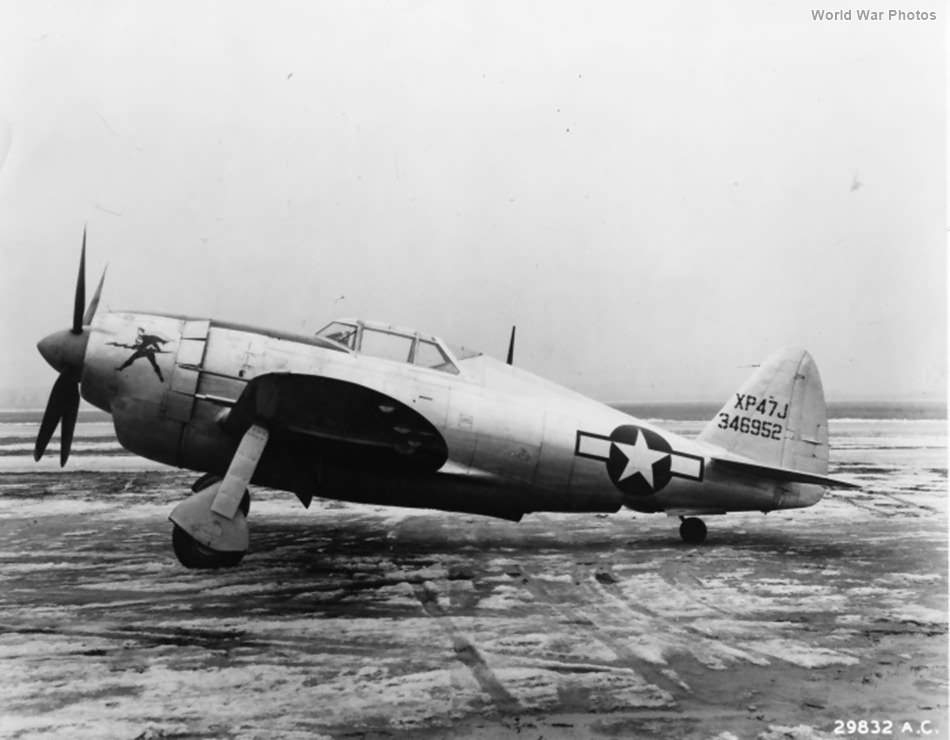The XP-47J was developed in an effort to reduce the aircraft’s weight and boost engine power. The initial design plans included a fan-cooled R-2800-61 engine, a contra-rotating propeller, and enhanced General Electric turbosuperchargers. Despite significant efforts by Curtiss and Aeroproducts, an appropriate propeller could not be developed. Consequently, a Curtiss paddle-blade propeller was installed, and the cooling fan was designed to create a long, slim nacelle to reduce the drag-producing surface area of the R-2800 engine. The aircraft’s armament was reduced to six .50 caliber guns with 1,602 rounds, and the fuel tanks were downsized to hold only 287 gallons.
The XP-47J first took to the skies on November 26, 1943, but returned to the ground shortly after when the engine failed with only ten flight hours logged. After installing a new engine, the XP-47J flew again in March 1944. It quickly proved to be a high-performance aircraft, achieving straight and level speeds of 500 mph. On August 5, 1944, with a new turbosupercharger installed, Republic claimed the aircraft reached 504 mph at 34,450 feet. However, later testing by the USAAF only achieved 493 mph, suggesting that the initial claim might have been inaccurate due to faulty instruments.
The development of the XP-47J was eventually halted when it became clear that production would require 70 percent new tooling. Additionally, the promising progress of the XP-72 project contributed to the decision to cancel the XP-47J. The XP-47J was displayed after the war at the Wright Field victory air show, featuring a Superman cartoon figure with a lightning bolt painted on the cowling.
